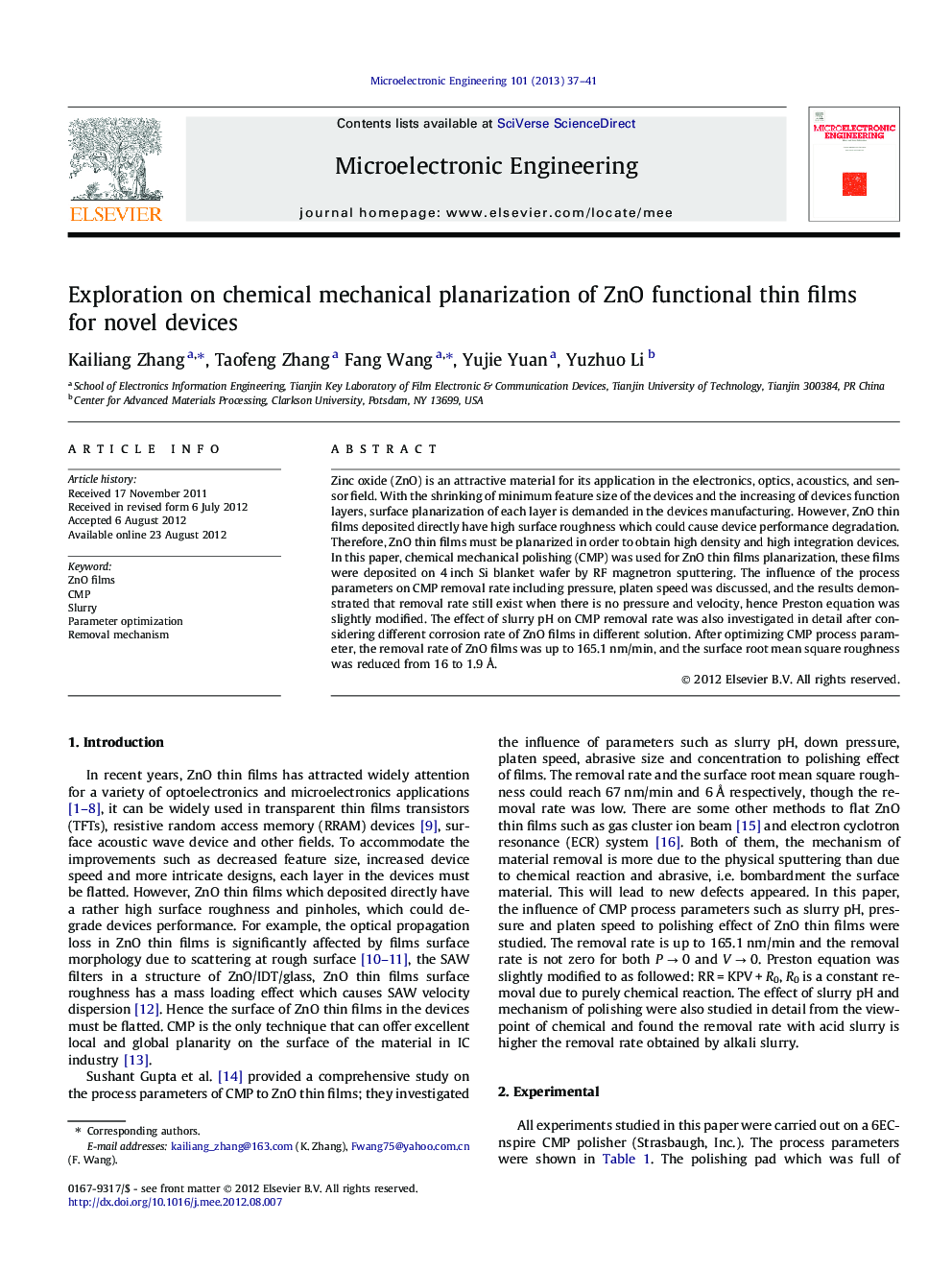| کد مقاله | کد نشریه | سال انتشار | مقاله انگلیسی | نسخه تمام متن |
|---|---|---|---|---|
| 540259 | 1450380 | 2013 | 5 صفحه PDF | دانلود رایگان |

Zinc oxide (ZnO) is an attractive material for its application in the electronics, optics, acoustics, and sensor field. With the shrinking of minimum feature size of the devices and the increasing of devices function layers, surface planarization of each layer is demanded in the devices manufacturing. However, ZnO thin films deposited directly have high surface roughness which could cause device performance degradation. Therefore, ZnO thin films must be planarized in order to obtain high density and high integration devices. In this paper, chemical mechanical polishing (CMP) was used for ZnO thin films planarization, these films were deposited on 4 inch Si blanket wafer by RF magnetron sputtering. The influence of the process parameters on CMP removal rate including pressure, platen speed was discussed, and the results demonstrated that removal rate still exist when there is no pressure and velocity, hence Preston equation was slightly modified. The effect of slurry pH on CMP removal rate was also investigated in detail after considering different corrosion rate of ZnO films in different solution. After optimizing CMP process parameter, the removal rate of ZnO films was up to 165.1 nm/min, and the surface root mean square roughness was reduced from 16 to 1.9 Å.
Figure optionsDownload as PowerPoint slideHighlights
► CMP of ZnO with lower RMS (1.9 Å) and high removal rate (165.1 nm/min) was optimized.
► Based on chemical reaction constant R0, Preston equation was modified: RR = KPV + R0.
► Slurry pH is one of the important influencing factors on CMP removal rate of ZnO.
► ZnO CMP can be divided into two steps: forming and removing of passivation layer.
Journal: Microelectronic Engineering - Volume 101, January 2013, Pages 37–41